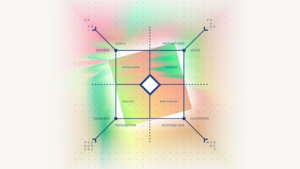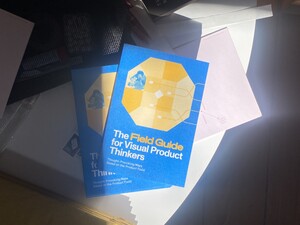Product Innovation as Knowledge Creation

When working on product innovation, knowledge is in constant flow. Teams working on digital products need to adapt to the ever-changing environment.
Product innovation is the realization and introduction of new or substantially changed products. Every product innovation is based on a new design. Designs are based on knowledge. A good design leads to a product that people value.
Products that people value are those that offer a solution to their problem. When organizations innovate, they need to know about current and existing problems people do have. Organizations process information, from the outside in, to solve existing problems and adapt to a changing environment. They discover and define (Double Diamond, 2012). The resulting designs are instructions “that turn resources into things that people buy, use and value” (Clark & Baldwin, 2005). They develop and deliver. In this process, organizations introduce a new, or substantially changed solution — a new thing, a product. New knowledge and information is embodied in the new product and flows from the inside out. The new product redefines both problem and solution.
Product Innovation and design are both knowledge-creation processes.Manhaes, 2010
This is how organizations re-create their environment through product innovation. The re-creation of their environment is not a controlled process, as the outside environment cannot be controlled.
Ongoing Knowledge Creation
Hugh Dubberly reflects on design as learning: “Successful organizations in the knowledge economy recognize that product innovation and design as knowledge-creation is an ongoing process” (Dubberly & Evenson, 2011). These organizations keep processing information from the outside in, to inform the next design. They follow an ongoing, iterative process where new knowledge is created and flows in both directions: from inside out and outside in.
When organizations create digital products, the dynamic of this flow is especially high: Compared to physical goods, it is relatively cheap to produce and distribute new or substantially changed digital products or features. A whole discipline — DevOps — arose to support product companies to release software multiple times a day.
Release early. Release often. And listen to your customers.Raymond, 1997
This wonderful statement is part of the world-famous writing “The Cathedral and the Bazar” by Eric Raymond and expresses a fundamental principle of the software discipline. A principle that summarizes innovation and design as knowledge-creation pretty well.
A System for Innovation as Knowledge-Creation
Teams working on digital products need to constantly adapt to the ever-changing environment. They need to constantly adapt to reflect the new knowledge.
Organizations need systems to identify, capture, and build on that knowledge in an ongoing process.Dubberly & Evenson, 2011
With Field we are creating such a system. Join outstanding product teams already using Field to organize the knowledge they are creating, when innovating.

Starte deine zielgerichtete Field Testphase mit einem unserer Product Coaches. Oder buche eine persönliche Demo Session.
References
Clark, K. B., & Baldwin, C. Y. (2005). Designs and Design Architecture: The Missing Link between ‘Knowledge’ and the ‘Economy.’ SSRN Journal. 10.2139/ssrn.664043
Double Diamond. (2012, January 3). Design Council. https://www.designcouncil.org.uk/sites/default/files/asset/document/Double%20Diamond%20Model%202019.pdf
Dubberly, H., & Evenson, S. (2011). Design as learning or “knowledge creation” the SECI model. Interactions, 18(1), 75–79. 10.1145/1897239.1897256
Manhaes, M. (2010, November). Designing Services As A Knowledge Creation Process. Issuu. https://issuu.com/manhaes/docs/manhaes_touchpoint_final
Raymond, E. S. (1997, May 21). The Cathedral And The Bazaar. http://www.catb.org/~esr/writings/cathedral-bazaar/cathedral-bazaar/




